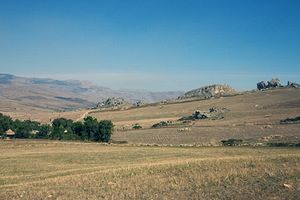Imagine if, 100 years from now, a curious resident or visitor to Florence would come across a copy of this very paper you are reading. What would he or she learn about this city during our time? Would any of the subject matter still be relevant? Would the reader smile with hindsight or frown with scorn at the decades of change? Perhaps these reactions and feelings can be predicted today, simply by opening a newspaper from our own past.
Between the years of 1890 and 1915, The Florence Gazette (at one point called The Italian Gazette, after expanding to include national coverage) was ‘an indispensable guide to all Anglo-American visitors’, according to its front page. Much like The Florentine, The Gazette was the only newspaper in the city printed in English, devoted to local news and cultural interests. Columns included ‘Musical Notes’, ‘Food and Wine Market’, and ‘About Town’, which all discussed themes that are akin to typical pastimes of modern-day Florence. However, the time difference still remains clear: The Florentine may let you know about upcoming performances of Verdi’s operas, while The Gazette reported when the composer himself was coming to town.
While a source of information on arts and leisure, The Gazette was also a vital message board for the neighboring community. Submissions spanned light-hearted musings by distinguished authors to serious concerns of local residents. Civic journalism became especially prevalent during a long-term crisis within the Florentine hospital system. As one subscriber lamented, the wards overflowed with ‘a nauseous atmosphere from want of ventilation and hideous sanitary arrangements.’ After the editor mentioned that a particular woman could not afford her husband’s coffin after his premature death, by the time the next issue came out, several dismayed readers had started a fund to support the family and improve hospital conditions.
This is not to say that The Gazette didn’t fuss over neighborhood hearsay, at times giving the lowdown on a nobleman’s social gathering or some flimsy engagement rumors. But the paper always remained impartial, even maintaining the anonymity of its staff. Only one of the writers was eventually revealed in print: when the editor-in-chief, Edward Bunbury Caulfield, died in 1906, the paper ran his obituary. The notice stated that he was well-educated in literature and had founded The Gazette with the ambition to ‘raise the tone of his paper above the petty social gossip the besetting sin of small local journals’. By printing stories that were worldly and sophisticated for the vacationing foreigner, yet still useful and entertaining for the average Florentine, Caulfield had achieved his goal.
And so, how does The Gazette lead us toward the present? As one skims through dated stories on the proper way to register a horse at the Palazzo Vecchio, today’s reader can still find a few glimmers of the future. A letter to the editor from 1892 cited the ‘frequent furious driving through the streets, which sometimes make the crossings rather dangerous, particularly for elderly or nervous people’. To think that the author knew nothing of Vespas, let alone the golden age of automobiles that was just over the horizon! Nevertheless, anyone who has spent even a little time in Florence knows that these remarks could easily pass for contemporary observation. Another pertinent column, titled ‘Italian Behavior’ discussed, for better or for worse, the manners of American girls in Europe. As the writer unabashedly labeled the girls as ‘beautiful, rich, vulgar Fast Loud’, this either proves the stereotype was manufactured and exaggerated long ago, or that its persistence alludes to a possible truth.
The Florence Gazette and The Florentine have one undeniable feature in common: both papers function as a resource for English speakers. Naturally, due to the wide accessibility of media today, The Florentine no longer needs to print metric conversion tables or dubious weather reports, as The Gazette often did. But as a journal moves with the times, it should also take the time to look back. Any newspaper, by unveiling the grand scheme of history, can give voice to the city’s silent, ancient walls, educating and enchanting its readers for generations. In the Christmas 1890 issue, while reflecting on Florence 50 years prior, one author of The Gazette affirmed: ‘We all, as a rule, find it pleasant to indulge in retrospection and allow our thoughts to wander back to early days and bask in the sunshine of youth and joy, disclosing bright vistas of times that are no more’.
If there is any doubt of a common thread through eras of journalism, to be sure, reminiscence will always remain timeless.






